PRIMARY CONTACT
A decade of innovation: President Wickes' tenure at CMCC
How extremity adjusting gained a foothold at CMCC
Sports Practice-Based Research Network yields great opportunities

A decade of innovation: President Wickes' tenure at CMCC
How extremity adjusting gained a foothold at CMCC
Sports Practice-Based Research Network yields great opportunities
PhysioRub is perfect for arthritis and rheumatic degenerative osteoarthritis. This cream is also great for minor traumas such as stretching sprains and diverse musculoskeletal pains.
Active ingredients include:
• Methyl salicylate
• Menthol U.S.P 40mg
• Eucalyptol U.S.P. 25 mg
THE NATURAL CHOICE FOR WELLNESS & PERFORMANCE
Benefits of Sockwell compression socks:
• Reduce muscle fatigue & soreness
• Minimize swelling
• Support & revitalize
• Overall comfort



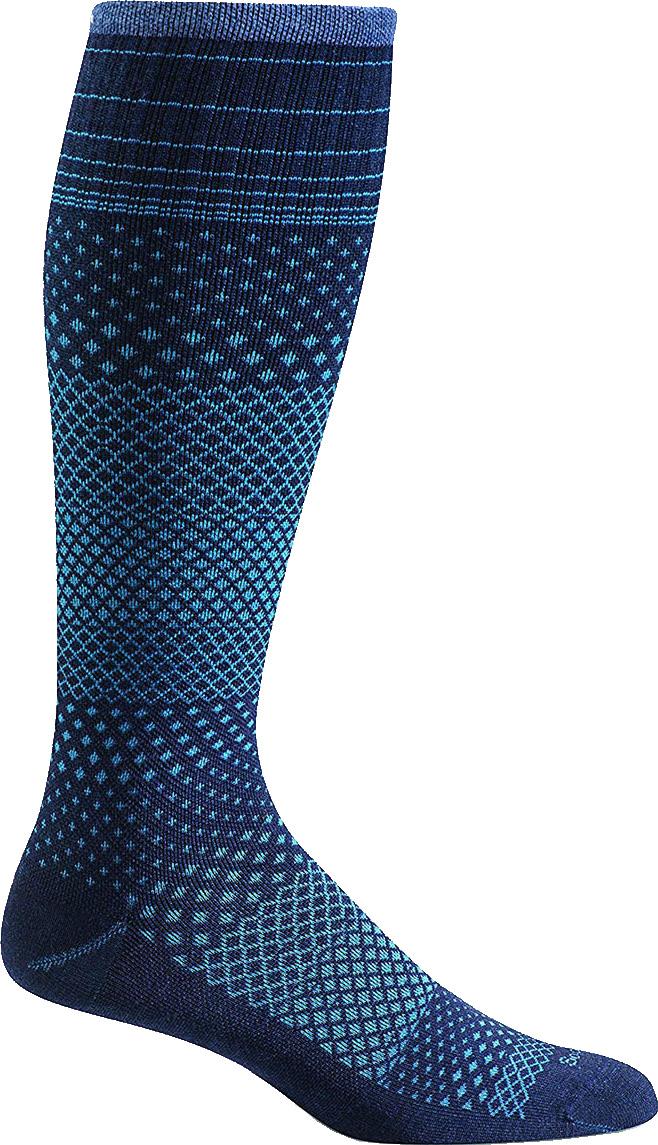
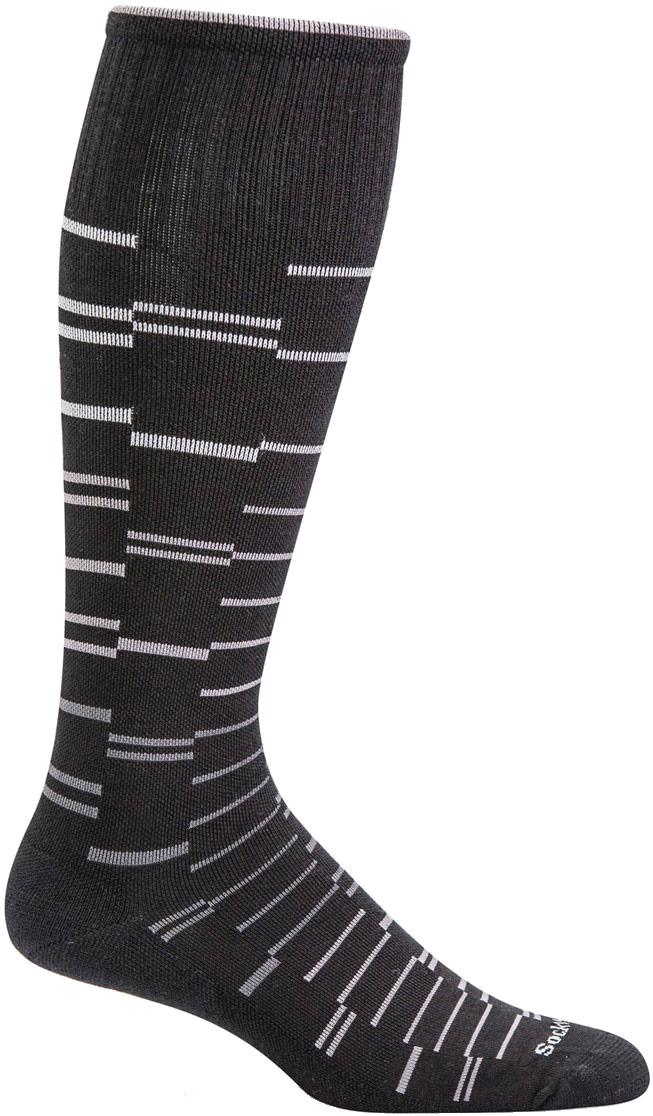

Rehabilitation students at Magu District Hospital receive textbooks donated by faculty at CMCC
Coby Iwaasa brings home silver at the 2023 Pan Am Games
CMCC researchers contribute to the WHO’s chronic primary low back pain guideline
Dr. Roy Farnsworth: Trailblazing Excellence


As you know, my tenure as President of CMCC will conclude upon my retirement at the end of June 2024. I’ve long preached about the value of reflection and how it drives future improvement, whether that be at the institutional level during accreditation selfstudies or a ministerial review, at the project level after conclusion of
a major objective, or at the personal level after finishing a course of study or reaching a personal milestone. Reflective practice involves not merely acquiring experience, but critically evaluating one's performance throughout that experience and assessing institutional or personal growth and change. I thought I would use my last message in Primary Contact to reflect upon the promises I made in my Inaugural Address that I delivered in November 2014. Quotes from that address are in bold below.
“First and foremost, CMCC must deliver the highest quality educational experience for its students. CMCC has made strides in introducing more active learning formats in the classroom, but we must continue to test, refine, and measure the effectiveness of new methods for teaching and learning.” The curriculum, and its delivery, are the foundation of
an educational program and we have put enormous resources into its improvement. We’ve added labs, added experiential learning sessions, consolidated lectures, improved integration of clinical and basic sciences, and refined our assessment practices. Over the past decade, we’ve undergone rigorous evaluations conducted by accreditors and ministerial review panels, each concluding that we are meeting all the standards set by those agencies. We set our sights on attaining additional accreditation to further drive improvement and in January 2022 we became the first chiropractic program accredited by Councils on Chiropractic Education in two different countries (US and Canada).
“We will provide a superior technology infrastructure to better enable students and faculty to use mobile devices and facilitate anytime-anywhere learning and interactivity.” This is an area
in which we have excelled. We implemented a requirement for students to have mobile tablets to better enable real-time access to digital learning resources in the classroom and labs. We implemented a sophisticated recording system to digitize all lectures, allowing students 24/7 access to these materials along with the ability to search videos for key portions and to add annotations. We now have smartphone or tabletbased classroom interactivity systems. We abandoned paperbased exams and migrated to a web-based testing platform. These technology advances proved prescient during the COVID-19 pandemic, allowing us to continue delivering our program even during long periods when the campus was shut down. Through generous donations, we were able to acquire the first digital dissection teaching devices (Anatomage® tables) in Ontario. Our Library has made great strides in providing students access to advanced digital databases and apps. We implemented a convenient IT help desk to provide students and employees with ready access to assistance with technology.
“We will design and implement smart classrooms and laboratories and be willing to abandon obsolete and inefficient teaching methods. We will strategically blend faceto-face, hybrid, and collaborative approaches to learning.” We made great progress in this area. We got rid of our obsolete diagnostic imaging, histology and microbiology laboratories and replaced them with multipurpose labs with interactive large screen monitors. We expanded the dissection lab and installed high efficiency air scrubbers and modern monitors. Our force sensing table lab was relocated and doubled in size and equipped with larger monitors. We’ve added small group study rooms. Our simulation lab has
new computerized mannikins and new task training devices for eye, ear, and abdominal exams. About 25% of our lectures have transitioned to an online format. We still need more space to allow for a significant expansion of our standardized patient program and further experiential learning opportunities. We haven’t achieved the level of team-based learning in the curriculum that I hoped for, but I’m hopeful that too will be achieved in the next year or two.
“I am also committed to providing our wonderful faculty with the tools and support they need to deliver a world-class education, including educational technology and regular and ongoing training in contemporary course design, delivery, and student assessment.” I’ve described above some of the educational technology we’ve added over the past decade. We also replaced a suboptimal learning management system with a worldclass platform. We’ve added fulltime personnel in curriculum development and assessment roles. Our examination software enhances our ability to track competency assessments across the four years of the program. This coming year, we will be adding new competency tracking software in the clinics. Numerous workshops have assisted faculty members in course design, question writing, online teaching methods, diversity, equity, and inclusiveness in the classroom setting, use of digital media, and application of evidencebased practice skills. Our Force Sensing Table Technology® has revolutionized how psychomotor skills are developed and assessed, and this technology has been adopted by more than 40% of chiropractic institutions around the world.
“We will fully embrace the scholarship of teaching.” CMCC
has long been respected for its research endeavors. Over the past decade, we’ve taken steps to align more fully with Boyer’s model of scholarship by enhancing our efforts in the scholarship of teaching and learning. Our faculty promotion criteria were expanded to provide better recognition of this type of scholarship. We continue to send large teams of faculty to present their research at educational conferences around the globe. We recently hosted the biennial Process of Integration of Evidence (PIE) conference, attracting a large international audience of educators.
“The outstanding reputation of CMCC is in part due to the long commitment to research - a commitment that I intend to continue and to build upon. CMCC does not have the full resources of a public university but consistently conducts research of the highest quality and of great impact because of our researchers' dedication, efficiency, and creativity, and the freedom offered in a private institution. During my tenure as president, we shall not waiver from our dedication to research as a vital part of our mission.” CMCC is one of only two chiropractic institutions in North America that still commits more than 5% of its operational budget to research. We successfully completed an ambitious $3.5M fundraising campaign in 2017 to become the only chiropractic institution with a fully endowed research chair position. Our research publication productivity remains very high. We developed research partnerships with prestigious institutions in Canada and around the world. We can continue to take pride in our research expertise and record.
“Our clinics must have the sophisticated clinical examination tools and state-of-the-art treatment facilities expected in
a top-tier academic health care center. We will continue to expand our clinical offerings so that we can ensure that our students are immersed in an experience rich in diversity of patients, breadth of complexity and mix of health care providers.” We installed new digital imaging equipment in our campus clinic. We added some top-end flexion distraction tables to better manage patients with lumbar and cervical disc syndromes. New Shockwave® and laser treatment devices provided additional pain management options. Our clinical rehabilitation room was expanded. We developed a new clinic site within a health care professional building in Bowmanville. We unfortunately had to shut down our clinic within the Anishnawbe Health Toronto facility when they developed plans to relocate, but within a week we were operating a new clinic site in the Rexdale Community Health Centre which provides care to an underserved population, including many new immigrants to Canada. Just this month, we made another move, winding down operations at Sherbourne Health and opening
a clinic within the Rekai Centre, a nearby long-term care facility. We continue having a clinical operation embedded within St. Michael’s Hospital Academic Family Health Team, and we will soon have a clinical presence within a major Toronto rehabilitation centre.
“The Boy Scouts have a rule, ‘Always leave the campground cleaner than you found it.’ That same rule can easily apply to college presidents, and you have my promise that I will leave CMCC in an even better position for its next leader.” This was how I opened my inaugural address and I think it’s appropriate to use it as my concluding comment. Every leader aspires to leaving a legacy of improvement and I hope that I have accomplished this lofty goal. My predecessors, Drs. Moss and Coulter, each advanced CMCC to the next level of excellence. While I have not accomplished everything that I set out to do, I truly believe that CMCC has progressively improved its ability to meet its mission of delivering world class chiropractic education, research, and patient
1. What was the address of the first CMCC building?
2. What was the first CMCC building previously known as?
3. Where was CMCC's third president born?
care. We are well-primed to take our institution to the next level, with our first master’s degree program ready to submit to the ministry for approval this year, plans to expand our out-of-province clinical experiences for our students, further digital transformation on campus, new clinical partnerships about to launch, a new fitness facility coming this year, and a very ambitious plan to add an assessment centre and expand experiential learning.
Our accomplishments over the past decade are due in no small part to the amazing team of administrators, staff and faculty who work tirelessly to realize our strategic objectives and to support our students. I will be forever grateful to their work, to the generous support our alumni and friends have provided CMCC, and to my Board of Governors which afforded me the privilege and opportunity to lead CMCC.
 David Wickes, DC,
David Wickes, DC,
MA

Answers on page 20

The Board of Governors of CMCC are comprised of a diverse group of volunteers from across Canada. We each have a role in helping the institution achieve its vision, “An academic institution recognized for creating leaders in spinal health,” and its mission, “deliver world class chiropractic education, research and patient care.” We achieve this by practicing good governance in board recruitment, leadership, financial responsibility and fiduciary duty.
We have been fortunate to attract outstanding and dedicated Board members, one of whom, Mr. Ernie Wolkin, stepped down in October, after serving on the Board as a public member for 12 years. We thank him for his service and for lending us his expertise. As an accountant, Mr. Wolkin was particularly helpful in his position on the Board’s Finance Committee.
In October, we also welcomed our newest Board members: Drs. Famida Jiwa (Class of ’97), Arif Karmali (Class of ’14), and John Church. Dr. Jiwa, a graduate
of CMCC, is from Ontario and is the president and CEO of Osteoporosis Canada. Dr. Karmali, a CMCC graduate from Alberta, has a research background and a particular passion for positive youth development and mentorship. Dr. Church is from Ontario having retired as a professor teaching health policy and health promotion at the University of Alberta, with extensive research on health care, including chiropractic. We are excited to work with these new Board members who bring their experience and expertise to CMCC.
The Board-appointed presidential search committee worked diligently with our search firm to find the next leader of CMCC. The interview process is completed and an announcement of our new President is coming soon. It is with tremendous gratitude that the Board thanks Dr. Wickes for his 10 years of service at CMCC. The list of accomplishments, innovations, leadership qualities, and examples of dedication is far too long to list in this message. Dr. Wickes, we wish you all the best in your retirement.
The CMCC Students’ Council has a valuable voice at our Board meetings and has often reported that the student body needs a better fitness area. The Board has answered this year by approving funding for renovations to provide an expanded state of the art fitness centre at CMCC. This will provide over 3,000 square feet of space divided into zones for cardio, strength, circuit, turf movement and multipurpose use such as for yoga
classes. This should be completed in late August of this year.
The Board Challenge was established in 1992 to help foster the Board's fundraising responsibilities. The award recognizes the individual effort by a Board member toward the advancement of the goals of CMCC in a specific campaign. Backs in Motion, earlier known as the Run for Chiropractic Education, has been the recipient of funds raised in the annual challenge ever since, with between $25,000 and $40,000 raised by the Board each year. We have set a Backs in Motion goal of $30,000 this year. These funds will go directly to CMCC to enhance education and research. I encourage all alumni to donate to this great event. We will be calling!
We have a very exciting year ahead at CMCC as we will be celebrating a new graduating class in June and welcoming a new class in the fall. We will also see a change in leadership and exciting renovations in the facility. The Board will continue to support the institution, to help it grow and create leaders in spinal health.
Mark Perrett BSc, DC Chair, Board of GovernorsTo contact any member of the Board, please email board@cmcc.ca.

Thank you to the CMCC Governors’ Club for the gift of a new Full Body X-Ray Phantom, informally known as Olga. The Erler Zimmer X-ray Phantom contains a real human skeleton as well as the outline of the larynx, lung, heart and kidneys, but is lightweight and easily handled. All joints are moveable and mounted to allow normal X-ray positioning. Year IV interns now have a stateof-the-art tool at their disposal to complete their X-ray requirement during their clinical internship.
CMCC has also invested in a torso phantom for use in X-ray, CT and MRI training.
Congratulations to all students who received an Undergraduate Award earlier in the academic year. A total of $80,000 in cash and bursaries were awarded to assist students with tuition and living expenses.
During the awards ceremony, CMCC also honoured faculty members Drs. Chris DeGrauuw (Class of ’97) and Natalie Labelle (Class of ’00) for Excellence in Teaching and Learning. This award is based on demonstrated passion for education, innovation in the classroom (or clinic) and the application of the principles of adult education.
Dr. Matthew Barrigar (Class of ’88) was awarded the William Peek Faculty Award for excellence in teaching, based upon recommendations from students and peers.
This year, CMCC added a new award within the Graduate Studies chiropractic residency programs. The Anne L. Taylor Vaisey Memorial Award went this year to Dr. Pegah Rahbar (Class of ’23).
most prestigious award. It is given to a practising chiropractor in recognition of their outstanding service, professional achievement, and significant contribution, which influences and benefits the profession.
The recipient demonstrates the qualities of a leader who upholds the highest professional and ethical standards in their practice.
Learn more about Dr. Tibbles’ (Class of ’90) career and work at: https://vimeo.com/892956206.
CONGRATULATIONS TO DR. GLEN HARRIS, RECIPIENT OF OCA’S RESEARCH AND ACADEMIC AWARD
This award recognizes a chiropractor or researcher engaged in research or academia contributing to expanding the knowledge of the profession.
Among his many professional attributes, Dr. Harris (Class of ’97) has been supporting and mentoring his students for decades as a clinician. He has been part of CMCC’s Research Ethics Board for many years and is currently assisting with assessments and research into persistent pain at the Schroeder Pain Assessment and Rehabilitation Research Centre, part of UHN and sat on the OCA’s Evidence-Based Framework Advisory Council (EBFAC).
CMCC CONGRATULATES DR. TONY TIBBLES, DEAN, CLINICS, NAMED OCA’S CHIROPRACTOR OF THE YEAR.
Chiropractor of the Year is OCA’s
As a result of his work and commitment to education, chiropractors across Canada have improved their practices and quality of care.

Thank you to all who attended CMCC Students’ Council’s Annual Charity Gala on February 2. Altogether the group was able to donate $20,000 to Eva's Initiatives for Homeless Youth.
Founded in 1989 by Eva Smith, a Jamaican immigrant, advocate and activist, Eva’s consists of four sites located across Toronto that support youth between the ages of 16 to 24 by providing shelter, transitional housing, and health and well-being programming to help youth experiencing or at risk of homelessness.

Classroom & Live-Streamed | 7 CE Hours
The College of Chiropractic Sciences (CCS) and CMCC invite you to CMCC campus on September 28 to play the expert witness and jury role during the trial! A medicolegal patient case will be presented that involved a chiropractor who allegedly was involved in assessing and treating an older adult patient who presented with seemingly musculoskeletal complaints involving the thoracic spine and chest wall, who unfortunately suffered a medical emergency. Did the chiropractor complete a thorough assessment of this patient? Did the chiropractor appropriately manage this clinical encounter? Could this happen in your clinical practice? You will listen to the evidence and the science presented and help decide with our expert panellists if the chiropractic management provided met current standards of care and if such management impacted the patient's outcome.
Division of Continuing Education
ce@cmcc.ca
In June 2024, Dr. David Wickes will retire from his decade-long presidency at CMCC. During his tenure, President Wickes, better known as Dave, has spearheaded numerous strategic initiatives that advanced CMCC’s academic excellence, expanded research opportunities, fostered the
implementation of innovative educational technology, and solidified strong community partnerships. Under his guidance, CMCC retired its long-term debt and significantly strengthened its financial health, maintained high enrolments of very qualified students and an enviable applicants-
to-accepted ratio, and achieved several remarkable milestones, elevating its position as a renowned educational institution nationally and internationally. President Wickes’ vision for the future embraced technology, the result of which has been a decade of progress that has enabled CMCC
to remain nimble in the face of a pandemic, adapt to the changing needs of students, reduce the institutional carbon footprint, and set it up for the future.
CMCC’s digital transformation has included a comprehensive redesign of its IT infrastructure, providing redundant high speed access to the Internet, enhanced cybersecurity measures, expanded Wi-Fi access, a shift to cloud-based assets, improved software development capabilities, and acquisition of new financial, fundraising and student management systems. Among the changes in educational technology was the transition from traditional paper-and-pencil exams to electronic assessments, revolutionizing the way students were evaluated. The introduction of video-based interviews modernized student admissions interviews, standardizing the presentation of questions and providing a more equitable interview process across the provinces, increasing geographic accessibility for student participation and allowing assessors more opportunity to reflect and consider applicant competencies.
CMCC’s Health Sciences Library underwent its own transformation during this time, beginning in 2015 when it expanded its collection of e-books, integrated its subscription e-journals into Google Scholar, allowing students and faculty to directly access full text from Google Scholar search results and adding a large variety of instructional applications for basic and clinical sciences.
In 2017, CMCC became the first post-secondary institution in Ontario to implement the Anatomage® virtual dissecting table into its curriculum. This tool augments learning in gross anatomy, histology, pathology, and diagnostic imaging. The same year marked another
milestone: by 2017, 80% of CMCC lectures and procedures were being recorded for later review, using technology that offered search capability and a written transcript of the material. Although its value was recognized at the time, having this in place and with healthy adoption by faculty, was vital in the following years during the pandemic, when CMCC was able to continue delivering its program.
From 2020 through 2022, when universities and colleges struggled, and education was disrupted worldwide, CMCC was able to continue offering its program and graduating its students on time. During this exceptionally novel time, President Wickes oversaw the urgent transformation of CMCC working and learning operations as agile faculty, staff members and administrators instituted stringent infection control procedures. Changes included migration to work-from-home for many personnel, a shift to online lectures and remote small group learning and the creation of multiple small technique laboratories across the campus to allow for safe handson chiropractic instruction. Clinic introduced telehealth and CMCC maintained a high quality of student support services, delivering two virtual convocation events.
Despite the challenges of the pandemic, CMCC experienced strong enrollment, was not forced to lay off employees and graduated all students on time. Through diligence, CMCC achieved a zero on-campus infection transmission rate and remained financially healthy.
Dr. Wickes also developed CMCC’s first comprehensive assessment plan that served as a key element within the self-study processes associated with scheduled evaluations by accrediting agencies and the Ministry.
The FSTT® (Force Sensing Table Technology) program has been another area of exciting growth since it was first developed by Dr. Jay Triano. Changes were made to the table to streamline production of the FSTT® and reduce manufacturing costs. In the eight years since the first one was produced, 21 chiropractic institutions have purchased the technology to enhance their technique programs.
Agreements with educational institutions and health organizations have increased collaboration among CMCC faculty and that of partnering organizations. In the past 10 years, CMCC formalized partnerships with The University of Winnipeg, Ontario Tech University, University of Southern Denmark, the University of Toronto’s Institute of Health Policy Management and Evaluation, the Toronto Rehabilitation Institute, the University of New Brunswick, and the Institute Franco Européen de Chiropraxie. Such partnerships build bridges between programs and enhance research and educational capacity.
In 2019, Dr. Wickes signed the International Clinical and Professional Chiropractic Education Position Statement on behalf of CMCC. In doing so, he clarified for students CMCC’s model of care and understanding of chiropractic as a primary health care profession with expert knowledge in spinal and musculoskeletal health emphasizing differential diagnosis, patientcentred care and research. This would be a milestone for CMCC and chiropractic in Canada.
In 2022, CMCC’s DC degree program became the first in the world to achieve accreditation by two separate councils on chiropractic education. Adding US accreditation to the long-held Canadian accreditation offers CMCC graduates

the additional opportunity to write the US board exams to be licensed to practice in the US.
Dr. Richard Mercier was Chair of the Board while the pandemic was at its height. He shares his experience of that unique and challenging time in our history:
"I was elected CMCC Board Chair in October 2019. That was a very proud moment for me, being the first Frenchspeaking Board member from the province of Québec to be elected to this elite position. This historic event would soon start to haunt me a little, since Dr. Wickes liked to use his gracious sense of humor and tease me about me being from a 'different universe.'"
"In January 2020, we travelled to Phoenix to attend the Association of Governing Boards of Universities and Colleges (AGB) President/Board Chair meetings to support our work together at CMCC. During the weekend it became evident to us that CMCC was performing extremely well even compared to many other well-established universities. We were both invited to sit on different panels to share the way we work at CMCC and demonstrate the solidity of our governance.
"During this weekend we had inspiring discussions, both on professional and personal grounds. He won’t admit it, but it was at that time that we developed a lot of respect for each other and established the foundations for what became a great friendship. I am humbled to have been instrumental in fulfilling two of any President’s dreams according to what was mentioned at the AGB Conference: first to speak a different language; and secondly to live far away from CMCC!!!
"In March 2020, the pandemic hit, and all our Board meetings were held on Zoom. The lack of proximity was difficult for maintaining and creating all relationships. We felt it at the Board level and CMCC faced challenges during this difficult time.

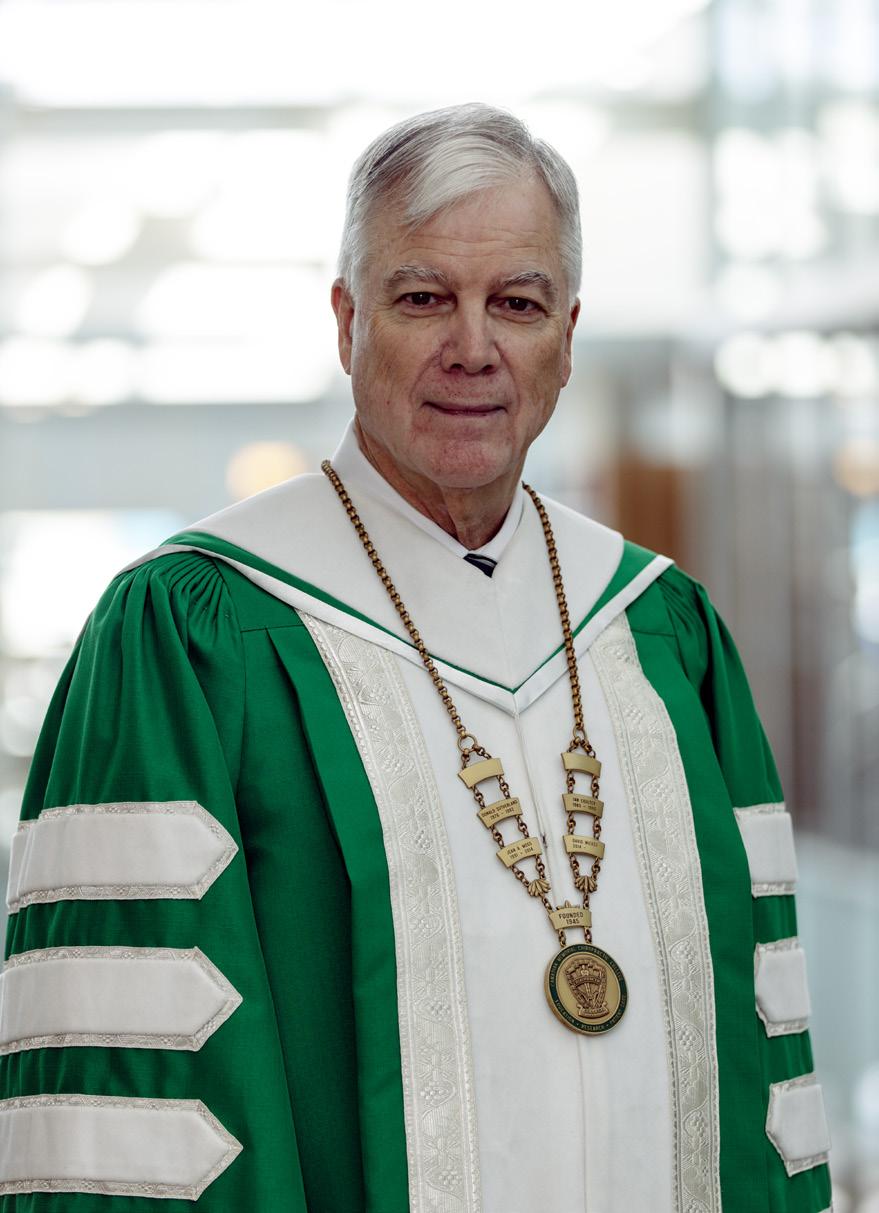
"During my frequent conversations with Dr. Wickes, I was a very privileged witness to his exceptional commitment and dedication to taking care of the entire CMCC community along with his Executive Leadership Team and every CMCC family member. I will forever hold the greatest admiration and respect for his relentless work and passion during these troubled times, and during his 10 years at the helm of CMCC.
“I was a very privileged witness to his exceptional commitment and dedication to taking care of the entire CMCC community.”
"We both went through some very challenging personal times during our journey together and it was always very heart-warming for me when he would check-in to see how my family and I were all doing. The two years working closely with David were for me, a very precious gift and the memories will forever be in my heart. MERCI ÉNORMÉMENT MON AMI!!!"
Dr. Greg Woolfrey, Chair of CMCC’s Board during Dr. Wickes’ final years stated, “As Chair of the Board of Governors, I thank and commend Dave for his exceptional vision and relentless energy, which have elevated our institution to unprecedented levels of excellence and distinction. He and his leadership team made our institution stronger than ever, earning the respect and admiration of the chiropractic profession and the higher education community."
The retirement of President Wickes
will mark the beginning of a new chapter in CMCC's history. Working with CMCC’s Board of Governors, he oversaw the development of two long-term strategic plans, the last of which represents the period 2022 to 2025, ensuring the next president has a roadmap for the future.
President Wickes will continue serving CMCC for an additional year as a consultant to ensure a seamless transition and provide valuable assistance in achieving the remaining goals in CMCC’s 2022 to 2025 Strategic Plan.

Reconnect May 31 & June 1 at CMCC for a memorable weekend of social events and a two day CE program (9 CE hours)
• Friday off site formal sit down dinner featuring live entertainment from ‘79 classmates Dr. Jim Meschino & his band along with Dr. David Byfield, followed by Saturday's casual BBQ at CMCC
• Delve into a weekend of workshops
• Hotel: $269+ per night - Thursday, May 30 – Sunday, June 2
• Alumni Awards – nominate your classmate

Students at Magu District Hospital in Tanzania thank CMCC faculty for the donation of textbooks to bolster their studies and practices. These students are community health workers enrolled in a firstof-its-kind educational program in clinical kinesiology designed to bring physical rehabilitation to underserved communities.
Dr. Brian Budgell (Class of ’86), director of CMCC’s Life Sciences Laboratory, is the driving force behind the program, run by Global Peace Network (GPN). GPN is a registered charity that provides clinical care to patients in underserviced communities, as well as providing education to local clinicians who are interested in
improving their knowledge and skills in rehabilitation.
According to Budgell, “clinicians in Africa and southeast Asia often have good training in the management of infectious diseases such as HIV/AIDS, tuberculosis and malaria, but little background in managing the increasingly prevalent chronic mobility disorders. The program has graduated 16 clinical officers and nurses in Tanzania, as well as 22 community health workers and has expanded to southeast Asia through an agreement with RMIT University in Melbourne, Australia. On our most recent visit to Tanzania in January 2024, documentation was presented
to the National Association for Technical and Vocational Training and Education in order to seek national accreditation for our program. GPN was also invited to extend its educational program to two new districts in northern Tanzania.”
The clinical kinesiology program was created by Global Peace Network and includes face-to-face mentoring, asynchronous learning and weekly sessions with experts in the field. The Spinal Care Clinic at Magu District Hospital was built by GPN and is run and staffed by the district council. You can learn more about the work GPN is doing through their website at www.globalpeacenetwork.ca
Congratulations to Year IV intern and elite athlete Coby Iwaasa, who received two silver medals in raquetball during the 2023 Pan Am Games in Santiago, Chile this October. Iwaasa and teammate Samuel Murray won silver in men’s doubles followed by silver in the men’s team competition. They won silver after defeating the number one ranked team in Mexico.
Iwaasa has been balancing his studies with the rigorous practice and coaching required to remain at the top of his game.
Iwaasa discovered chiropractic while recovering from a shoulder injury in Japan in 2017.
Although chiropractic is not prominent in Japan, he was referred by a friend to a medical doctor, who Iwaasa says "stunned me with his knowledge and ability related to musculoskeletal care." Iwaasa learned that Dr. Ecchu had also recovered from a similar injury. After learning more about his experience and reflecting on his own interests and priorities, Iwaasa was motivated to seek education that would allow him to learn techniques similar to those Ecchu had used to help him recover, and found that in Canada, chiropractic fit. He found a mentor in Dr. Craig Takahashi, and he made his way to CMCC.
Now, in Year IV, he is reassured that he made a good choice for himself and feels he is in the right place. Iwaasa has enjoyed his clinical internships with Dr. Jarrod Goldin (Class of ’96) at Campus Clinic and Dr. Chadwick Chung (Class of ’09) at St. Michael’s Hospital.

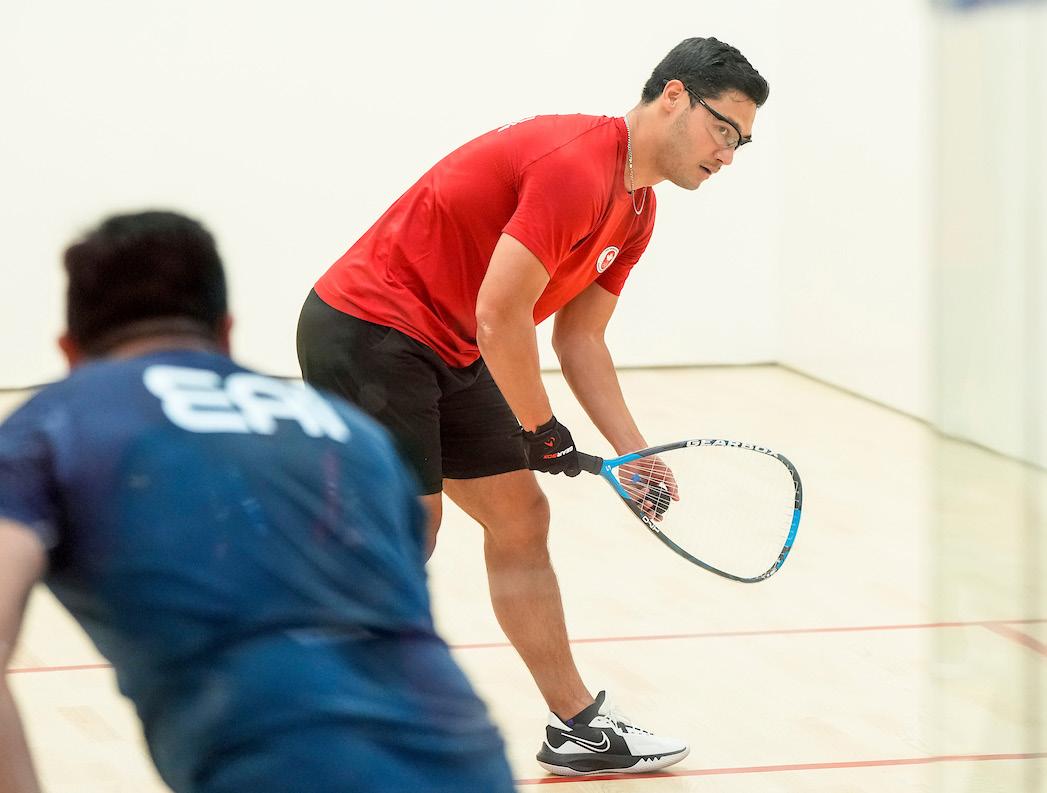
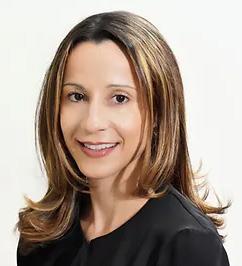
Dr. Carol Cancelliere (Class of ‘04) , a scientist with the Institute for Disability and Rehabilitation Research (IDRR) and Faculty of Health Sciences at Ontario Tech University, led the largest among eight teams charged with systematic reviews of interventions for chronic primary low back pain (CPLBP).
Collaborating with clinicians and scientists from CMCC, the IDRR,
and other institutions such as the University of Toronto, University of Zurich, and Dalhousie University, the group completed the reviews in 2022, looking at the benefits and harms of structured exercise programs, structured education or advice, transcutaneous electrical nerve stimulation (TENS), and needling therapies.
The World Health Organization (WHO) guideline, focusing on non-surgical interventions for CPLBP, recommends interventions commonly delivered through chiropractic care, such as structured education/ advice, structured exercise, spinal manipulation, needling therapies, massage, mobility assistive products, cognitive behavioral therapy (CBT), and multicomponent biopsychosocial care. These interventions may be offered as part of care for community dwelling adults,
including older people, with CPLBP, with or without spinerelated leg pain.
“The results are encouraging for chiropractic in that, within Canada, chiropractors are trained in most of these areas, which is hopeful to drive policy change,” says Cancelliere. “What’s more, WHO would like to see these rehabilitation interventions universally accessible."
"As a WHO study, the rigour and reporting on the review progress was notable, involving the application of Cochrane methods for systematic reviews of interventions and GRADE methodologies, says Cancelliere. "Cochrane methods are renowned for their systematic, transparent approach to reviewing scientific evidence. This involves a comprehensive search for relevant studies, critical appraisal of the quality of the evidence, and
CMCC will take them off your hands, in addition to any human bone models you would like to donate to education. Contact Dr. Aaron Teitelbaum at anatomy@cmcc.ca or call 647 805 2042
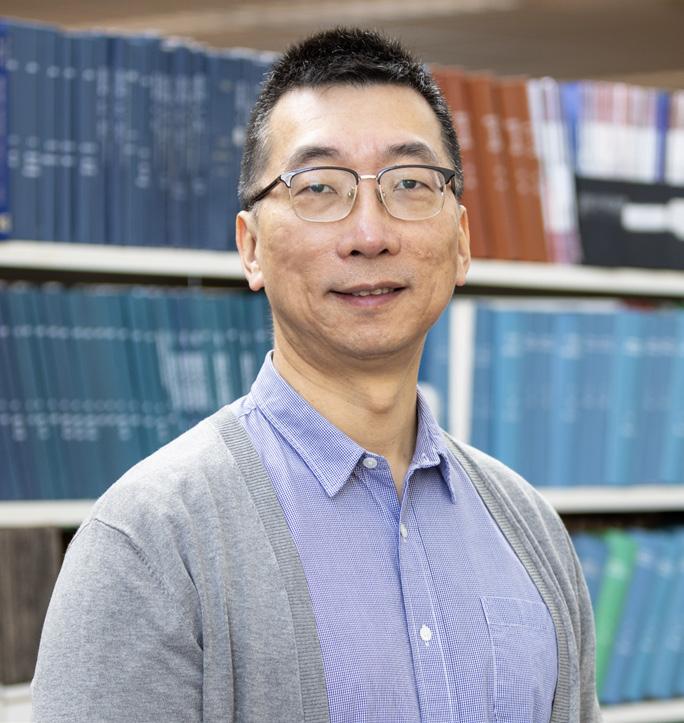

synthesis of findings in a way that minimizes bias and maximizes reliability. The Cochrane approach ensures that the reviews are thorough, replicable, and up-todate, providing a solid foundation for healthcare decision-making.
In conjunction with this, the GRADE (Grading of Recommendations, Assessment, Development, and Evaluations) methodology was employed to assess the quality of the evidence across five key domains: risk of bias, inconsistency, indirectness, imprecision, and publication bias. This method involves a detailed evaluation of the strength of the evidence and the certainty of the recommendations derived from it.
Dr. Cancelliere’s team included experts from various disciplines, reflecting the multidisciplinary nature
of CPLBP management." Among Cancelliere’s team were Drs. Ginny Brunton, André Bussières (Class of ’91), Christine Cedraschi, Gaelan Connell (Class of ’14), Sophia da Silva-Oolup (Class of ’14), Astrid DeSouza, Martha Funabashi, Doug Gross, Brett Guist (Class of ’15), Cesar A. Hincapié (Class of ’03), Léonie Hofstetter, Rahim Lalji (Class of ’16), Joyce Lee (Class of ’12), Silvano Mior (Class of ’80), Javier Muñoz Laguna, Kent Murnaghan, Danny Myrtos (Class of ’04), Margareta Nordin, Paulo Pereira, Andrew Romanelli (Class of ’05), Heather M. Shearer (Class of ’04), Danielle Southerst (Class of ’09), Kent Stuber (Class of ’02), Maja Stupar (Class of ’03), Daphne To (Class of ’17), Andrea Tricco, Leslie Verville, Dan Wang, Jessica J. Wong (Class of’10), Fatemeh Yazdi, James Young (Class of ’16) and Hainan Yu.
Looking forward, the team reflects on the need for more inclusive research methodologies that consider a broader spectrum of evidence, including qualitative, mixed methods and implementation studies. This approach aligns with the growing recognition of individualized, patientcentered care in CPLBP management.
“We are optimistic about the future of CPLBP research and treatment,” Cancelliere adds. “Our involvement in this WHO guideline has been invaluable in understanding the complexities of CPLBP and identifying areas for improvement in research and practice.”
Their seven papers were published in the December 2023 issue of the Journal of Occupational Rehabilitation, found at https:// link.springer.com/journal/10926/ volumes-and-issues/33-4
WHO guideline for non-surgical management of chronic primary low back pain in adults in primary and community care settings’ can be found at https://www.who.int/ publications/i/item/9789240081789

a collegiate athlete, a merchant marine, and a longshoreman before he embarked on his career in chiropractic.
Marines off the west coast.
Farnsworth initially pursued dentistry at UBC. However, he
was so impressed with what his brothers, Gerry (Class of ’50) and Earl (Class of ’50), had learned in just one year at CMCC, he decided to switch careers and joined them! It was something his wife Dianne notes that he never regretted.
After graduating from CMCC in 1951, he moved to Vernon, BC, started his clinic and treated loggers, ranchers and others, often in the evening, so they could return to work the following morning. His philosophy was to “do as much as you can at one time because you may never see that person again.”
His wife, Dianne, says of his rapport with his patients, “he loved his patients and had such strong relationships with them.It’s hard to put across in words.”
Farnsworth moved his clinic to a home office on Middleton Mountain, jokingly referred to as “Back Acher’s Ranch,” in 1993, retiring in 2002. He enjoyed the outdoors and activities such as camping, riding and hunting and eventually sold 90 acres of Middleton Mountain to the Regional District as parkland for others to continue to enjoy. This area is now known as Farnsworth Nature Reserve.
Farnsworth also wanted to give back to chiropractic for the career that he had loved. Upon his passing in 2023, his family worked with CMCC to create the Dr. R. D. Farnsworth Chiropractic Adjustment Award. The first recipient will be selected from the Class of 2024.

On an average week, close to 200 Canadian chiropractic students learn and practice technique at CMCC. This past week, like many others, a good number of them woke up, made their way to 6100 Leslie, and upon arrival, made their way to the technique labs.
What might have surprised them to know is that when many of their predecessors came through CMCC, prior to the early ‘70s there was little chance that they would be
learning an extremity manipulative procedure when they arrived for class.
So, what changed between the ‘70s and now?
Fast forward to November 4, 2023. I was sitting in St. Stephens On-the-Hill United Church in Mississauga, ON, attending the celebration of life for Dr. Jamie Laws (Class of ’79) who passed away on May 30, 2020. There were 12 people who told stories
of Jamie’s accomplishments as a person, as an athletic therapist and as a chiropractor. Jamie taught me technique at CMCC from 1983 until 1986 and when I started practice with Herb Lee down at 11 Yorkville, Jamie’s practice was right down the hall. In this way, I became very familiar with him. Furthermore, he was at every CMCC event that I can ever remember. He would always seek me out and we would get caught up.
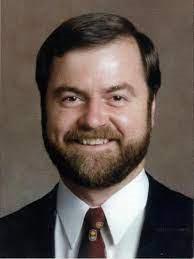
As I sat and took in all the stories of Jamie, I asked myself a question. “Was it Jamie Laws that brought extremity adjusting to CMCC?”
The following look at Jamie’s education and career path is what caused me to wonder.
By 1973, Jamie had already graduated from McLaughlin College at York university with a BA in Physical Education and Geography.
In 1975, 25-year-old Jamie Laws arrived at 1900 Bayview Ave as a CMCC student, but this young man landed with a new designation: AT, for Athletic Therapist. Jamie was a member of the first cohort to pass the newly created certification for athletic therapists, (CAT (C)) in 1975 and was the first to graduate as a chiropractor.
An AT would naturally have an interest in the treatment of extremity injuries because that would be the majority of what they saw. In support of this contention, Jamie became a leader among students almost immediately and soon after he arrived, began
teaching a 30-hour course called “Principles and Management of Athletic Injuries.” From what I am told, much of the course involved extremity injury taping techniques.
I also knew that he wrote the book called “Chiropractic Treatment of the Lower Limb” because I bought it back in 1984. And I vividly remember holding the book in one hand while listening and watching Jamie demonstrate the various procedures. At the time, it didn’t occur to me that I may have been in the first cohort of CMCC students to have been taught this material. I just assumed that it had always been there.
In 1987, Jamie left his post at CMCC and carried on with the many other roles he performed over his career. When I returned to CMCC to teach technique in 1988, I was teaching what Jamie taught me.
Strengthening the advancement: Dr. Len Faye
When I got back to my CMCC office the week following the Celebration of Life, I contacted a number of faculty that were either students just before my arrival or were already faculty in the mid to late ‘70s. Sure enough, prior to my arrival, chiropractic students at CMCC were primarily exposed to spinal adjusting.
I asked Dr. Zoltan Szaraz (Class of ’74), who was Chair of Technique when I was a student, and he said, “In my recollection Jamie Laws was the first to compile and teach extremity adjusting officially and within the curriculum.” Then, Dr. John Taylor (Class of ’79), a classmate of Jamie’s, reached out to a few people who would be able to fill some gaps. Among them was Dr. Leonard Faye (Class of ’60). While Jamie was a student, in the mid-to-late ‘70s, Len had
already started assessing joint play of the extremities.
While teaching at Anglo-European Chiropractic College from 1964 to 1975, Len had taught himself extremity adjusting using John Mennel’s book as a resource (Joint Pain: Diagnosis and Treatment using Manipulative Techniques). My understanding is that when Len arrived at CMCC and introduced this material to CMCC students, they realized how valuable this could be for a practicing chiropractor. So, Len ran some clubs after hours in 1975 to teach interested students and apparently it became part of the curriculum in 1976, while Jamie was a student.
So then why is it, that when I reached out to CMCC alumni who graduated between 1979 and 1983, they remember very little extremity adjusting? And yet my class of 1987 was very familiar with Jamie and extremity adjusting?
I concluded that the departure of Len from CMCC must have caused a loss of momentum. I wondered then, how it was restored?
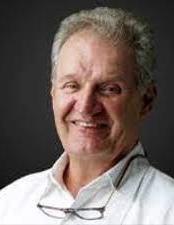

The Scope of Chiropractic in Ontario Changes Under a New Act: Dr. Don Henderson
Then I got a very interesting email from former OCA President, Don Henderson (Class of ’75). He shared the following: “Back in early to mid ’80s during the HPLR (Health Professions Legislation Review), scopes of practice were up for legislative pronouncement. I recall what was then the Board of Directors of Chiropractic (today the College of Chiropractors of Ontario) only had chiropractic
treating and diagnosing spinal disorders.
I fought with them to include spinal AND extremity dysfunctions and disorders. They said the Ontario Government would not agree to that and fought against the OCA. Anyway, we fought for it and I would not sign off unless extremities were included. A lot of bickering ensued, but government ultimately decided to allow for extremity inclusion.”
These descriptions explain the loss of momentum following Len Faye’s departure and the sudden resurgence just as I arrived to begin Year II, in 1984. Why was Jamie teaching me extremity adjusting? Because he wrote a book on the subject. Why would he write a book on the subject? I suspect because of his AT background and the fuel that Len Faye provided before he left CMCC. Jamie realized he could be the guy to take it forward. And why take it forward in 1984? Because Don Henderson had just managed to expand our scope of practice to include extremity joints.
The momentum continues In any case, from that point onward, extremity adjustment teaching at CMCC never lost momentum again.
When Jamie left, Dr. Dan Proctor (Class of ’83) took over, using Jamie’s book as a reference, and then Dr. Greg Ruhr took over after that. And decades of graduated chiropractors will carry this valuable tool of extremity adjusting into their practices.
So, if you are a current student, when you are practicing an extremity procedure, remember that it wasn’t long ago that chiropractors did not have access to learning this skill. And if you are a CMCC graduate from the last 35 years, the next time a patient with a condition like lateral epicondylitis walks into your office, think of Drs. Len Faye, Don Henderson and Jamie Laws, because from what I can see they got the ball rolling. The ball didn’t have enough inertia at first, despite its value, but the trio described above slowly added weight to it and now it is self-perpetuating.
1. https://www.cndoctor.ca/inmemoriam-james-jamie-peterlaws-ba-catc-dc-frccsschon/
2. https://www. ontarioathletictherapists. org/resources/Documents/ Jamie%20Laws%20-%20In%20 Memoriam.pdf

Do the pollinators a favor and leave your yard clean up until it’s consistently 10 degrees. About 75% of Canada's native bees live in small holes under the ground, and they can be harmed by groundwork in early spring. Others live in
CMCC 20th annual

Thursday, September 12, 2024
Bayview Golf and Country Club


Sports chiropractic is receiving attention thanks to the work of CMCC Director of Education (Year II), Dr. Alex Lee, DC, FRCCSS(C) and his CMCC research team of Drs. Lara deGraauw, Brad Muir, Melissa Belchos, David Oh, Kaity Szabo, Chris deGraauw, Scott Howitt and Kent Murnaghan, who saw the potential in running a Delphi study to determine the focus of sports chiropractic research.
The group received funding in 2019, supported by CMCC and the RCCSS(C) foundation. The results were published in the December 2022 sports edition of the JCCA and marked the first-time research priorities were ever published for sports-focused chiropractic research.
Inspired by this first study, supported by CMCC and the
Foundation for the RCCSS(C), the International Federation of Sports Chiropractic (FICS) funded an international Delphi study, later published in The British Medical Journal Open Sports and Exercise Medicine, for which the team won four out of five of the awards given at the FICS Global Symposium in June of 2023.
Using the studies as a springboard, the team realized the desire of sports chiropractors to create a practice-based research network for which a grant from the Foundation for the RCCSS(C) made it possible to create the Sports & Exercise Research Collaborative for Health Practice-based Research Network (SERCH-PBRN).
Administered by CMCC faculty members Drs. Alex Lee, Chris Degraauw, Lara DeGraauw, Scott Howitt, Mohsen Kazemi, Brad Muir, and Glenn Cashman (Western States ’96), the SERCH-PBRN now includes 25 clinics across Canada and ran its first project in 2021, a practicebased survey on sleep. With the PBRN model, the network was able to invite over 4000 people to conduct the survey within a six-week period, of which 1690 usable surveys were collected, a huge number in research.
The network received a Foundation for the RCCSS(C) - Temper Sealy Sleep research grant to run the project. “What we need now,” says Lee, “is operational funding. PBRN’s are a proven concept in family medicine,” he continues. “In sports health care, I’ve only come across one other PBRN. The Athletic Training PBRN in the USA, that brings together all the athletic trainers in the US high school system.”
Lee says the argument for the PBRN is its practicality. “Much health research is conducted
in academic settings, not in the community where most people receive their healthcare. That is the advantage of PBRNs. The research is conducted in community-based clinical practices. This increases the external validity of the work”. Another advantage is that it is easier to translate the research back into practice – once the work is done, it is disseminated back to the clinics that collected the data to improve their practice.”
“The recruitment power is immense and it’s easier to engage the participants. In our case, we are lucky that many of the clinics are run by chiropractic sports fellows who are interested in the research, and who have research training. The camaraderie is phenomenal. In terms of designing PBRN-based studies, we work with our PBRN clinicians to craft them in such a way to minimize the disruption to the workflow of their clinics.”
Lee hopes to publish a descriptive study of the PBRN as well as the data on sleep. Already yielding exciting results, the possibilities for this PBRN are promising. Next up is a project that includes Canadian Paralympic athletes and Canadian national athletes to build a practice toolkit to guide athlete-centred care, and a qualitative study to understand how chiropractors support athletic performance with the athletes they treat.
Most often the biggest challenge is gathering data. In the case of the PBRN, that is one large barrier removed. The only limiting factor to the promise of what this network can provide/yield/generate are the funds to support the research staff who make the PBRN possible and its further expansion. As the SERCH-PBRN expands, it will increase its ability to impact patients and athletes in community practices across Canada.
SCOTT
DR.

Congratulations to Dr. Martha Funabashi who received the Scott Haldeman Award for Outstanding Research on defining adverse events for manipulation and mobilization, with team members Drs. Lindsay Gorrell, Katie Pohlman, Andrea Bergna and Nicola Heneghan. The team was recognized with the NCMIC sponsored research award at the WFC research conference last October in Gold Coast, Queensland. The awards were led by WFC Research Committee Chair Dr. Sidney Rubinstein and Vice-Chair Dr. Katie Pohlman.
Blended Course | Instructor: Kevin Cairns, BSc, R. Kin 20 CE Hours
Join Mr. Cairns on September 14 at CMCC Campus for a comprehensive exploration of Functional Capacity Evaluation (FCE). FCE is pivotal in evaluating an individual's physical capabilities in the context of specific job requirements. Learners will gain in-depth knowledge and practical skills in FCE, enabling them to assess an individual's functional capacity and match it with the demands of various job roles. This 20-hour blended program will enable learners to develop a holistic understanding of work assessments, enhancing their readiness for performing assessments for occupational health, insurers, vocational rehabilitation, and related fields.
Register now at ce.cmcc.ca (Course ID # 63830)

Blended Course | Instructor: Dr. Mark Scappaticci, BSc (Hons), DC, R.Ac, FRCCSS(c), CKTI 25 CE Hours
Join Dr. Scappaticci on June 15 and 16 at CMCC campus to delve into Myo-Matrix Release 3D (MMR-3D) techniques, focused on the upper body. This program aims to help clinicians develop the knowledge and clinical skills to assess and treat soft tissue pain and dysfunction using myo-matrix release techniques. During this 25-hour blended program, Dr. Scappaticci will address theory, key principles, and provide extensive supervised learner practice to help them treat root causes of pain and movement dysfunction on the shoulder, wrist and hand, neck and head, and medial and lateral elbow.
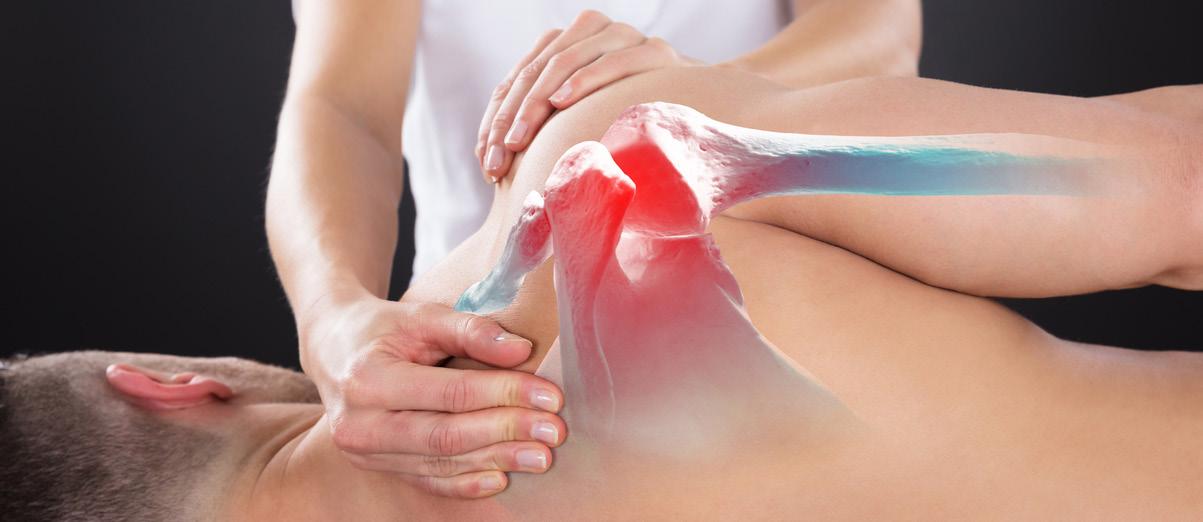
The donations listed here were received and processed between September 1, 2023 and February 29, 2024 for: Research Chair, Awards and Scholarships, Annual Giving Program, Backs in Motion, Gifts in Kind, In Memoriam and general donations. We extend our sincere appreciation to those who have made gifts to CMCC. If you have a correction to this list or would like more information about making a donation, please call Donation Services at 416 482 2340.
1244140 B.C. Ltd
Dr. David E. Abbott
ABC Gestion Sante Inc
Dr. Anthony G. Adams
Dr. Vincent Adams
Dr. Jennifer A. Adams-Hessel
Dr. Judy Adler
Dr. Carlo Ammendolia
Dr. Antonio Anziano
Dr. Adam Armstrong
Dr. Adib Ashraf
Dr. Frank Astri
Athlete's Care Sports Medicine Centres
Dr. Ayla Azad
Dr. Johannes Baarbe
Dr. Christina L. Bagnell
Dr. Evelyn Bak
Dr. Kimberly Baker
Dr. Charlene A. Banbury
Dr. Christopher E. Bardwell
Dr. John D. Bare
Ms. Mara Bartolucci
Dr. Samantha Bauer
Dr. Kirsten E. Baxter
Dr. Shayne Baylis
Dr. Melanie L. Beingessner
Dr. Marcel Bergeron
Dr. Condren R. Berry
Dr. Caroline Berthelot
Dr. Stevan M. Betts
Dr. Kelli L. Blunt
Dr. Mark G. Bodnar
Dr. Cameron Borody
Dr. Krista C. Borrowman
Dr. Sandra L. Bose
Dr. Luke A. Boudreau
Dr. Annette Bourdon
Dr. Sherilynn Bovay
Dr. Christine Bradaric-Baus
Dr. Crystal A. Bradshaw
Dr. Ron Brady
Dr. Deborah E. Brake-Patten
Dr. Blaine L. Broker
Dr. Kenneth D. Brough
Mrs. Bruna Brown
Dr. Suzanne L. Brown
Dr. Philip T. Browne
Dr. Keith L. Burchill
Dr. Kimberly D. Burgis
Dr. Rebecca Burns
Dr. J. Michael Cain
Dr. Audrey Cameron
Canadian Chiropractic Association
Dr. Carolina Cancelliere
Dr. Gregory W. Canning
Dr. Kimberly A. Castle
Dr. Cassandra J. Champion
Dr. Dwight R. Chapin
Dr. Kevin Charbonneau
Dr. Mardi C. Charlton
Dr. George Chiaravalloti
Chiropractic Association of Alberta
Chiropractors' Association of Saskatchewan
Dr. Heather Ciasnocha
Dr. Tanya Clarke-Young
Dr. Todd Clayton
College Chiropractic Clinic
College of Chiropractic Radiologists Canada Inc
Dr. William Columbus
Dr. Rhonda J. Corrigan
Dr. Ian Coulter
Dr. Laurel J. Cowie
Dr. Richard R. Cronk
Dr. Philip Croutch
Dr. Edward R. Crowther
Dr. Ian D. Culbert
Dr. Sarah M. Dale
Dr. Barbara L. Dance
Dr. Ivone De Marchi
Dr. Ryan Debusschere
Dr. Philip Decina
Dr. Elaine Dembe
Dr. Thomas J. Devereaux
Dr. James DiGiuseppe
Dr. Kevin Dinsmore
Divine Spine
Dr. Dave J. Dorion
Dr. Sonia K. Doroshenko
Dr. Giacomo Luigi d'Ambrosio Memorial Foundation
Dr. Robert J. Dronyk
Dr. Richard Dubler
Dr. Scott Dunham
Dr. Robert G. Earle
Elite Chiropractic and Sports Medicine
Elite Manufacturing
Dr. Jans C. Ellefsen
Dr. Trevor Erdie
Dr. Douglas W. Evans
Mr. Allan Evelyn
Dr. John Ewart
Mrs. Fay Dianne Farnsworth
Dr. Brad S. Ferguson
Dr. Brittany A. Filipetti
First Link Global Inc.
Foot Levelers, Inc.
Footmaxx of Canada, Inc.
Dr. Matthew Forgie
Dr. Judy A. Forrester
Dr. Jessalynn Frederick
Dr. Elsie L. Frickey
Dr. Paul D. Friesen
Dr. Teresa H. Fujimoto
Dr. Ryan B. Fyfe
Dr. Theodore M. Gall
Dr. Geoffrey Gamble
Dr. Christopher N. Garwah
Dr. Richard J. Gehrke
Dr. Geoffrey M. Gelley
Dr. Paul G. Georgopoulos
Dr. J. Stephen Gillis
Dr. Pala Gillis
Dr. Paul C. Gilmore
Dr. Dominic Giuliano
Dr. Arlene Gleadhill
Dr. Jeffrey D. Goldsworthy
Dr. Gregory R. G. Goodbrand
Dr. Linda Gordon
Dr. Liza Grant
Dr. Robert D. Green
Dr. Paul J. Grittani
Dr. Bernard Gryfe
Dr. Jason N. Guben
Dr. Sunyatta F. Guild
Dr. Martin B. Gurvey
Dr. James A. Hadden
Dr. Karin F. Hammerich
Dr. Katie Hammerschmidt
Dr. Keith G. Harper
Dr. Joanne M. Hartley
Dr. Dawn Harwijne
Dr. Eric A. Helson
Dr. Brett W. Hessel
Dr. David J. Hewko
Dr. Timothy Hiebert
Dr. Elizabeth Hodgins
Dr. Warren S. Hollis
Dr. Sarah J. Hopkins
Dr. Ian J. Horseman
Dr. James D. Howlett
Dr. Deborah L. Hutchison
Marion Hutton
Dr. John N. Huy
Dr. Brianna Hynes
Dr. Stephen H. Injeyan
Dr. Wayne P. Jakeman
Dr. Richard E. Jarvensivu
Dr. Famida Jiwa
Dr. Gregory A. Johnston
Dr. Stephanie E. Johnston
Dr. Christopher F. Jones
Dr. Curtis A. Jurgens
Dr. Kostadinos Kakarelis
Dr. Roy Kariatsumari
Dr. Rahim Karim
Dr. Arif Karmali
Dr. Mohsen Kazemi
Dr. Dirk W. Keenan
Dr. Terence M. Kehler
Dr. Brad A. Kehoe
Mr. Munir Keshwani
Mr. Jay Kilgannon
Dr. Kenneth W. Kinakin
Dr. Laurie King
Dr. Randy A. Kobayashi
Dr. Sasha Kobrossi
Dr. Richard H. Kolanos
Dr. Paul W. Kowall
Dr. Shane B. Kraft
Dr. Kevyn R. Kristmanson
Dr. Vance N. Kruszewski
Dr. Timothy Kunkel
Dr. Gregory Kuruliak
Dr. Mark G. Labrecque
Dr. Melanie Lachapelle
Dr. Derrill K. Ladell
Dr. Scot A. Ladell
Dr. Rebecca Laffoley
Dr. Lawrence LaFrance
Dr. Rebecca M. Laginski
Dr. Garth W. LaPlante
Dr. Rajiv Laroiya
Dr. Valerie A. Lavigne
Dr. David R. Lawson
Mr. George Lazarevski
Dr. Thanh Le
Dr. David Lee
Orlena Lee
Lee Chiropractic & Sports
Therapy Clinic
Dr. Carrie Lehman
Dr. Calvin Leung
Dr. Pierre Levesque
Dr. Brian R. S. Lim
Dr. Ronald T. Linzner
Ms. Wendy Lo
Dr. Katelyn C. Lockwood
Dr. Arthur Lopes
Dr. Johan Louwerse
Dr. Jeffrey R. Lustig
Dr. Bradley D. Luther
Dr. Chanh Luu
Dr. Lee MacAllister
Dr. Ward D. MacDonald
Dr. Norman B. MacLeod
Dr. Altaz Madhavji
Dr. Kevin G. Mahoney
Dr. Katie Malone
Dr. Sandra J. Malpass
Dr. Brent D. Manson
Ms. Deb Manz
Dr. Victoria L. Marshall
Dr. J. Scott Martin
Dr. Karen E. Martindale-Sliz
Dr. Stephen A. Maskall
Dr. Bruce Mason
Massage Addict Inc.
Dre Natalie Masse
Dr. David J. Matheson
Dr. Sarah Mattice
Dr. Laura McCall
Dr. Dorothea McCallum
Dr. Michael R. McCoul
Dr. Jason D. McDonald
Dr. Megan J. McDonald
Dr. Dominic McKenna
Dr. Kevin D. McKenzie
Dr. Joanne McKinleyMolodynia
Dr. Michael McLauchlin
Dr. D. Gordon McMorland
Dr. Kelley M. McVarish
Dr. Elizabeth A. Melendy
Dr. Richard Mercier
Dr. John Millett
Dr. Silvano A. Mior
Dr. Jennifer A. Mous
Dr. John P. Mrozek
Dr. Michael J. Murray
Dr. John A. Neal
Dr. Anna Neff
New Brunswick
Chiropractors' Association
Dr. Jill M. Newell
Newfoundland & Labrador
Chiropractic Association
Dr. Paul C. Newton
Dr. Alana Nicholls
Dr. W. John Noble
Dr. Craig D. Norman
North Vancouver Island
Chiropractic Society
Dr. Janis E. Noseworthy
Dr. Virginia U. Nsitem
Dr. Kirsten E. Olesen
Ontario Chiropractic Association
Dr. Mary-Irene Parker
Dr. Jodi L. Parkinson
Dr. Heather A. Paull
Dr. Sean E. J. Payne
Dr. Matthew D. Peacock
Ms. Mona Pedlar
People Corporation
Ms. Marilyn Pepper
Dr. Mark C. Perrett
Dre Denise Perron
Dr. Steven M. Perry
Dr. Alexander F. Pessoa
Dr. Devon Phillips
Dr. David A. Piche
Dr. Indira Pillay-Rego
Dr. Lianne Pinkney
Dr. Douglas L. Pooley
Dr. R. Andrew Potter
Dr. Karen E. A. Proctor
Dr. Aaron A. Puhl
Dr. Richard Radford
Dr. Richard Raigoza
Dr. Shervin Ranjbar
Dr. Paul M. Rego
Dr. Christine J. Reinhart
Dr. Marcel Reux
Dr. Marty V. Richter
Dr. Ryan Robichaud
Dr. Renae M. Rogers
Dr. Paul S. Rosenberg
Royal Bank of Canada
Royal College of Chiropractic Sports Sciences Canada
Dr. Matthew Ruston
Dr. Rowena Ryan
Dr. William Salameh
Dr. Murray E. Schneider
Mrs. Patti Scott
Dr. Stacey Scott
Dr. Darren J. Scraper
Dr. Peter See
Dr. George Semerdjian
Ms. Raheela Shaikh
Ms. S. Donna Sharp
Dr. Bryan Sher
Dr. Mark B. Shrott
Dr. Michael D. Sider
Dr. Ramandip (Roshni) K. Sidhu
Dr. Lisa Simpson McQuarrie
Dr. Christopher R. Small
Dr. Richard S. Smith
Dr. William M. Smith
Dr. Laura Solway
Dr. Marissa R. Sparrow
Dr. Ashton D. Spencer
Ms. Elizabeth Spoenlein
Dr. Alexander M. St. Pierre
Dr. William P. Stackhouse
Dr. David J. Starmer
Dr. Douglas C. Starodub
Dr. Igor Steiman
Dr. Scott E. Stevenson
Dr. Gregory B. Stewart
Dr. Marshall D. Stewart
Dr. Michael A. Stochmal
Dr. Kailee Stock
Dr. Sarah Stock
Dr. Catherine M. Straus
Dr. Kent J. Stuber
Student Canadian Chiropractic Association
Dr. Patricia A. Tavares
Dr. Shane H. Taylor
The Board of the Nova Scotia College of Chiropractors
The Co-operators Group Insurance
Dr. Richard R. Thompson
Dr. Anthony Tibbles
Dr. Filipe Tiburcio
Dr. Astrid Trim
Dr. Nick Tsaggarelis
Ms. Vera Turner
Dr. Beverly A. Tyler
Dr. David A. Urness
Dr. Teresa L. Van Bakel
Dr. Robin L. J. VanDerMark
Dr. John W. Vargo
Dr. Kathy Vertesi
Dr. Stephen P. Viljakainen
Dr. Michael Vilkas
Dr. Douglas Vlaskamp
Dr. Darrell J. Wade
Dr. Jennifer Ward
Dr. Robert S. Warnock
Ms. Anmarie J. Webb
Dr. Jennifer Webster
West & Varsalona Chiropractic Professional Corporation
Dr. Douglas White
Dr. Eleanor F. White
The Estate of Dr. Ronald Whiting
Dr. Kathy Wickens
Dr. David Wickes
Dr. Sarah E. Wild
Dr. N. Scott C. Wilson
Windsor Walk-In Chiropractic Clinic
Dr. Robert M.& Mrs. Anne Wingfield
Mr. Ernest Wolkin
Dr. Debbie K. Wong
Dr. Carolyn J. Wood
Dr. Katherine Wood
Dr. P. Gregory Woolfrey
Dr. Dean J. Wright
Dr. Deborah S. Wright
Dr. Randall R. Zindler
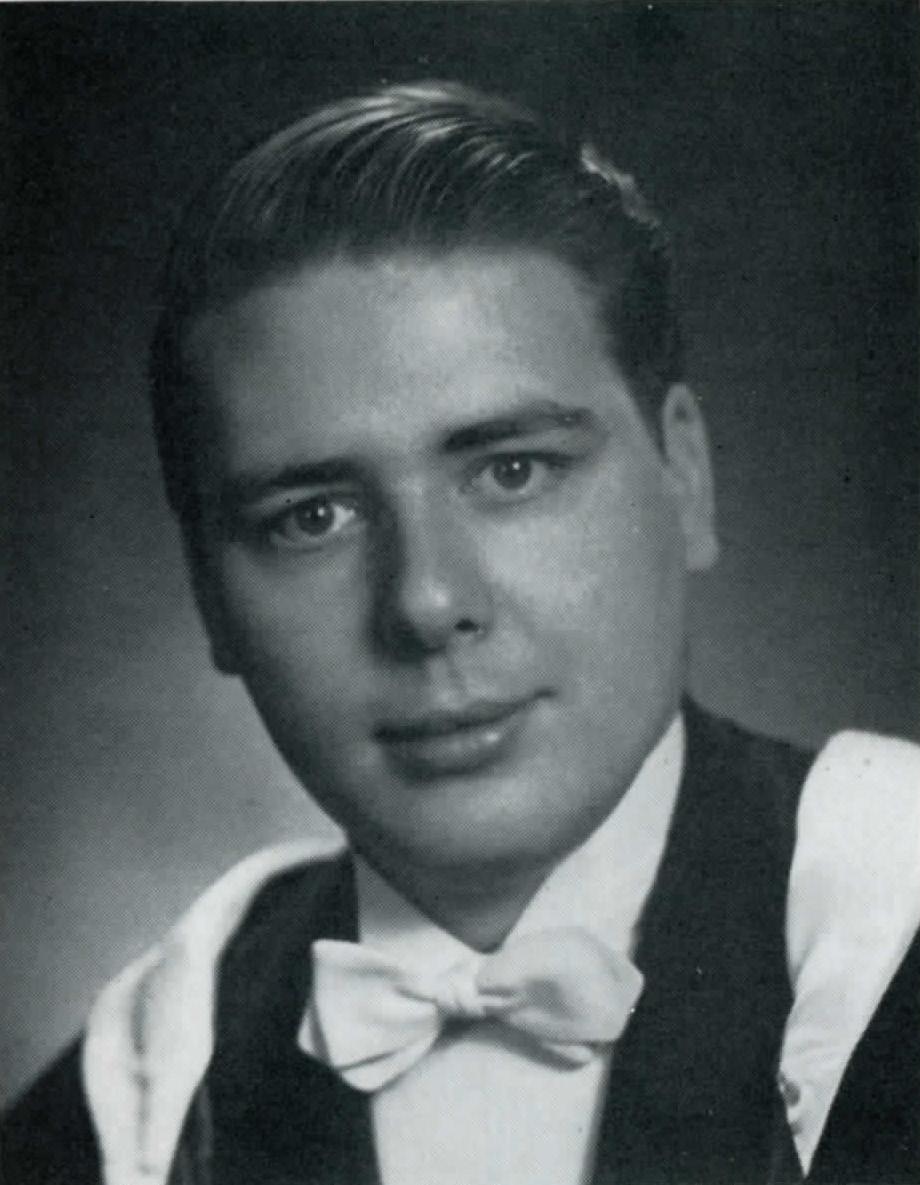
With special thanks to the World Federation of Chiropractic who generously shared their work for use in this Passage.
Dr. Paul F. Carey, a luminary in the Canadian chiropractic community, passed away on October 31, 2023. A graduate of the Canadian Memorial Chiropractic College (CMCC) in 1967, Dr. Carey dedicated his life to advancing the chiropractic profession and became a transformative figure in its history.
Carey joined the Board of the Ontario Chiropractic Association (OCA), in 1971. Serving as OCA President from 1981 to 1983, he worked with David Chapman Smith to begin the process that would see chiropractic as a self regulated profession in 1991.
In mid-80s, while Carey was vice president of the Canadian Chiropractic Association, chiropractic suffered from a lack of support from health insurance
agencies, leaving practitioners in a vulnerable situation with no public indemnity. Carey supported the vote among the Board to create a professional protective fund –the beginning of the Canadian Chiropractic Protective Association (CCPA). Carey was first President of the CCPA and remained in this position until 2014. Hugely important to the profession, holding the position of president took strength and wisdom. Carey’s investment strategy saw that funds were wisely invested and after a few years, it was in a secure position to serve Canadian chiropractors.
Carey was determined to protect chiropractors, but also known to be fair to patients where there was fault. He also believed that once stable financially, CCPA should support chiropractic and did so through supporting research and education as well as the provincial associations. CCPA was known and respected by insurance companies and lawyers to the degree that
discouraged any cases that were not absolutely solid. His strong character was widely known and in 2003, he was named one of Dynamic Chiropractic’s People of the Year.
In 1987, while CCA President, Carey supported a proposal to form a President’s Committee with the aim of exploring the notion of a national federation of chiropractic to promote the profession and secure its recognition within health care. By October the following year, the World Chiropractic Congress was held in Australia where the constitution for the World Federation of Chiropractic was passed. Carey served on its board until 2006 and was president for two terms, during which time, alongside Drs. Gerry Clum and Peter Dixon, Dr. Carey served as a co-chair on one of the most ambitious projects ever undertaken by the WFC -- a Global Identity Consultation. In response to a worldwide survey, nearly 30,000 chiropractors and other stakeholders contributed to
the identity statements and a clear framework upon which chiropractic could promote itself worldwide. Carey felt strongly that chiropractors had a place on the health care teams of every Canadian and that no profession could stand still in the midst of change.
In 2015, Carey retired from practice, leaving his clinic in the hands of his son, Dr. David Carey (Class of ’96). He remained connected to the profession through speaking engagements and conference events. In his honour, the Paul Carey Award was established at CMCC to recognize students holding a leadership position and developing new initiatives or programs that enhance the student experience, the curriculum, or the chiropractic profession.
Through his long career, Carey made enduring contributions and friendships.
Dr. Dean Wright (Class of ’89), CCPA Chief Executive Officer, shared the following about his former colleague: "Paul was unafraid to tackle a challenge - in fact, he seemed to thrive on it. His resilience was astounding. It inspired others to
stretch themselves and find more to offer.”
CCA past president Dr. Eleanor White (Class of ’83) commented, "When in tight spots, Paul was intelligent, thoughtful, and both cool and emotional. He planned and prepared for all types of outcomes. He was well resourced and generous in his support of a worthwhile endeavor. “
Dr. Shane Taylor (Class of ’96), President of the Canadian Chiropractic Protective Association, shared this about his predecessor at CCPA: “Thankfully Dr. Carey along with Dr. Bramham had the pioneering sense to start the Canadian Chiropractic Protective Fund (now CCPA). Dr. Carey spent almost 30 years of his life working on chiropractic malpractice protection on behalf of the profession managing claims right up until he left the Board. Without his vision and fiscal management, the CCPA might not be where it is today.
I was fortunate enough to follow Dr. Carey as President of the CCPA in 2015, and when I did, the most common comment I heard was ‘those are very big shoes to fill.’ My response was always, ‘I will never
fill those shoes, as my role will be different. I will not have to manage claims like Dr. Carey did. He did it all. My new role will be much easier.’
The one thing that was very important to Dr. Carey was protecting not only the individual chiropractors, but also protecting the profession. With that intestinal fortitude of pushing back against outside forces, he helped the profession in more ways than in just malpractice claims against chiropractors.”
Paul was predeceased by his first wife Nina and an infant daughter. He is survived by his second wife Florenta, brother Bill, children David, Lisa and Robert, grandchildren Nicole, Matthew, Scott, Bryce, Evan, Cameron and Ryan and great granddaughter Olivia.
Source: World Federation of Chiropractic. Latest News and Features/Paul Carey. Toronto (ON): WFC; 2023.
Available from: https://www.wfc.org/website/ images/wfc/Latest_News_and_ Features/Paul_Carey_1943-2023.pdf

The art of life is to know how to enjoy a little and to endure very much
WILLIAM HAZLITT

With special thanks to the World Federation of Chiropractic who generously shared their work for use in this Passage.
Dr. Gerard Clum, a well-respected figure in chiropractic, passed away on October 27. As a longstanding Board member and former president of the World Federation of Chiropractic (WFC), Clum was known for his sense of fairness and diplomatic skills, earning widespread respect within the profession.
Beginning his involvement with the WFC in 1988 as a member of its inaugural Board of Directors, Clum held various executive positions and served as the eighth president from 2006 to 2008. Notably, between 2003 and 2005, he co-chaired the WFC’s Identity Consultation with Drs. Paul Carey and Peter Dixon, a challenging role aimed at consolidating diverse stakeholder views into a unifying
Gerard W. Clum (Palmer Class of '73)
statement. The result, endorsed unanimously in 2005, declared chiropractors as “the spinal health care experts in the health care system.”
Dr. Clum served as the president of Life Chiropractic College West (LCCW) for 30 years. His influence extended beyond LCCW, as he became involved with the Council on Chiropractic Education and the International Chiropractic Association. During this time he was instrumental in setting up the the Association of Chiropractic Colleges, of which CMCC is a member. Even after retiring, he continued serving on the Board of the Foundation for Chiropractic Progress and the Integrated Healthcare Policy Consortium.
Throughout his illustrious career, Clum received numerous accolades, including the WFC Honor Award in 2015, the highest recognition from the organization. Clum remained a
mentor to many in the profession until his passing in 2023, after which he received tributes from across the profession, irrespective of political viewpoints. Those who worked with him remembered his polite diplomacy and the courteous and respectful way he was able to communicate his opinion.
World Federation of Chiropractic. Latest News and Features/Gerry Clum. Toronto (ON): WFC; 2023. Available from: https://www.wfc.org/website/ images/wfc/Latest_News_and_ Features/Gerry_Clum_1952-2023. pdf

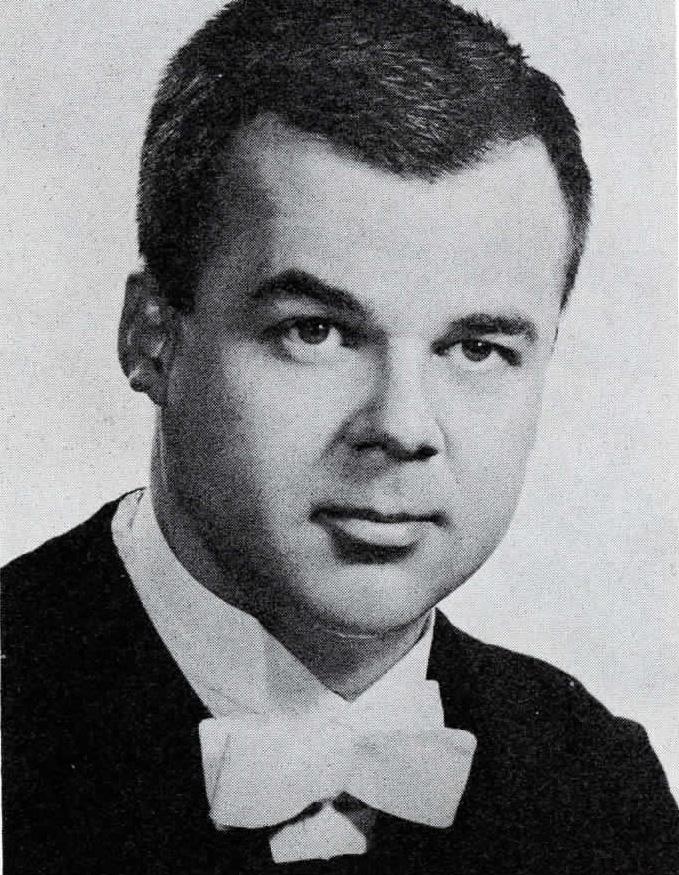







CMCC is grateful to its supporters who have thought to include a donation to CMCC in recognition of the passing of their loved one. Memorial cards are available through Donation Services at 416 482 2340.

From student awards to enhanced learning technologies to offering volunteer hours that help us with our applicant reviews, events and community outreach. We couldn’t do it without you.
Primary Contact is published twice a year by the Division of Marketing and Communications at CMCC.
Your opinions, comments, and input are important to us. Do you have suggestions for topics we can cover?
Phone: 416 482 2340 Fax: 416 482 3629 communications@cmcc.ca
Other frequently requested email addresses: admissions@cmcc.ca alumni@cmcc.ca board@cmcc.ca development@cmcc.ca events@cmcc.ca govclub@cmcc.ca president@cmcc.ca
Executive Editor: Shannon Clark
Contributing Editors/Writers: Mara Bartolucci
Margaret McCallen Dr. Kim Ross
Art Director: Dora Kussulas
Contributing Graphic Designer: Tariqa Manji
Photography: istockphoto.com CMCC Media Services
Associate Vice President, Institutional Advancement & Communications: Mara Bartolucci
Director, Alumni Relations: David Coleman
Director, Development and Clinic Advancement: Dr. Peter Kim
CMCC does not necessarily endorse or approve advertisements published in Primary Contact. Opinions of individual authors do not necessarily reflect the views of CMCC.
Publications Mail Agreement Number: 40062432
Change of address and undeliverable copies should be sent to:
CMCC Alumni Relations Office 6100 Leslie Street Toronto, ON M2H 3J1 cmcc.ca
Twitter @cmccnews Facebook.com/cmccnews Instagram @cmccnewsandevents

We’d love to scan and archive them to share with your classmates and fellow alumni and we’ll send back the originals. Contact us at communications@cmcc.ca with any questions and to make arrangements. We look forward to hearing from you! SUNDAY, APRIL 21, 2024
There is still time to participate by helping us fundraise. For more information visit cmcc.ca/backsinmotion
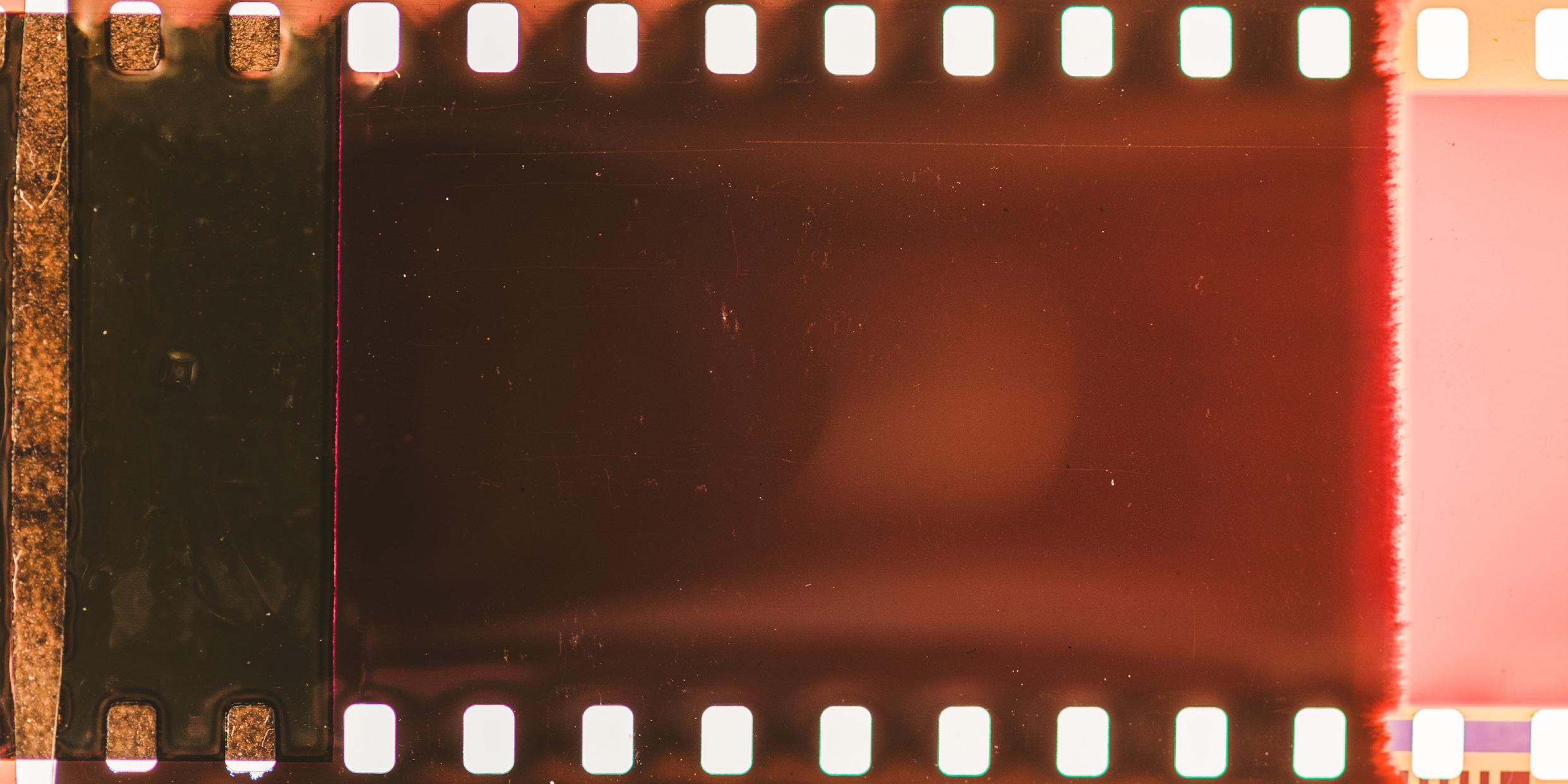

This issue was sent without an envelope or polybag to all Canadian addresses. It is our way of reducing our carbon footprint.